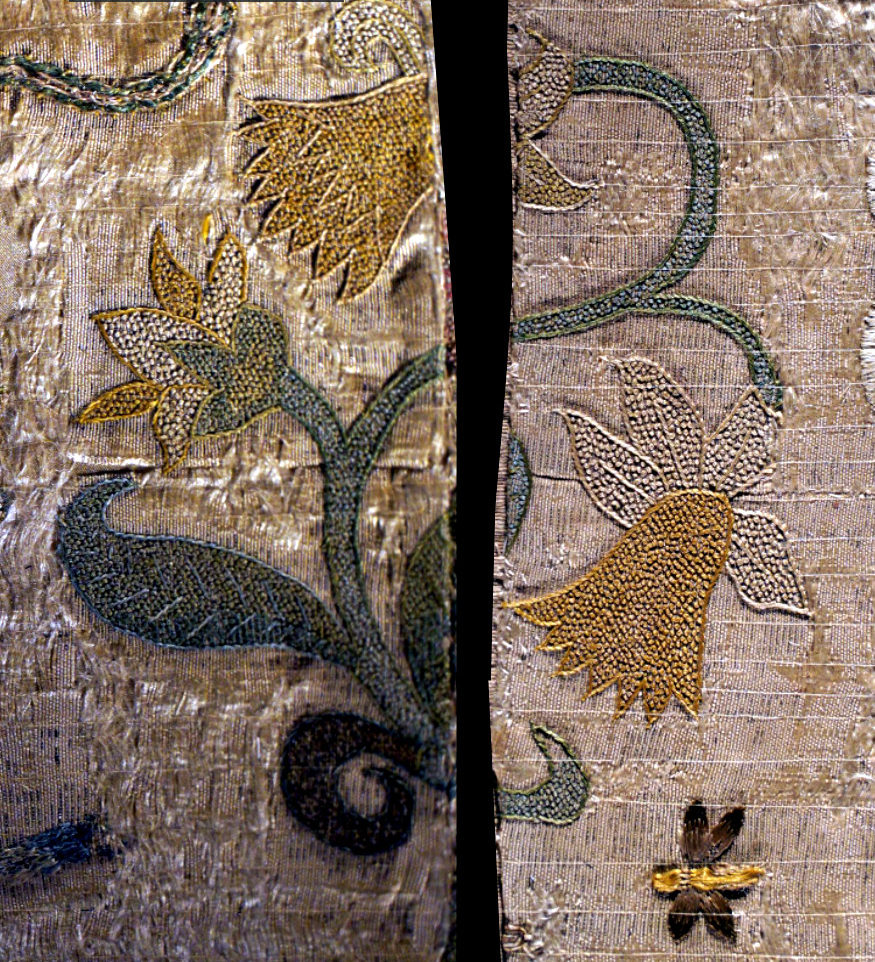Upcoming Paper at the Annual Medieval Dress and Textile Society
The members of BAC Stitch are all members of MEDATS, so naturally we presented our first real paper there last year, titled ‘Dogs, Deer, Bears, and Ghosts: The Hunting Scene on the Bacton Altar Cloth’. This year the conference theme is Changing Textiles: Upcycling, Recycling, Remaking, Reimagining and Reusing, which naturally lends itself to papers about objects like the Bacton Altar Cloth, which have obviously had multiple forms and uses throughout their working lives. Challe will present an image-filled slide presentation about the work she did, with significant input from the entire research group, editing digital images of the table cover and rearranging them to construct an approximation of the cloth as it was when it was cut and stitched into the shape we know today.
The conference is free for MEDATS Members to attend, and will take place on Saturday 7 May 2022. Our paper summary is below:
Digitally reconstructing the embroidered fabric that became the Bacton Altar Cloth
The Bacton Altar Cloth, recently conserved and displayed in the exhibit ‘The Lost Dress of Elizabeth I’ at Hampton Court Palace, is a unique survival of a highly embellished luxury textile created circa 1600. The manner of its construction strongly suggests that the pieces of embroidered fabric that make up the Altar Cloth have had at least one previous life as part of a different textile object, which has been cut up and stitched together to form the table cover as we see it now. Studying digital images of the front and back of the Bacton Altar Cloth, this research attempted to identify visible traces of this history, and determine what that object could have been. After computer software was used to map its embroidered motifs, seams, selvedges, and patterns of excessive wear, the pieced fabric of the table cover was digitally separated into its component parts and virtually reconstructed to form the shape of the panels that were cut down to create the Bacton Altar Cloth. The traces of past uses and reuses of this fabric help reconstruct its history and illustrate the enduring value of luxury textiles in the early modern era, when even the most elite persons might welcome a recycled object.
